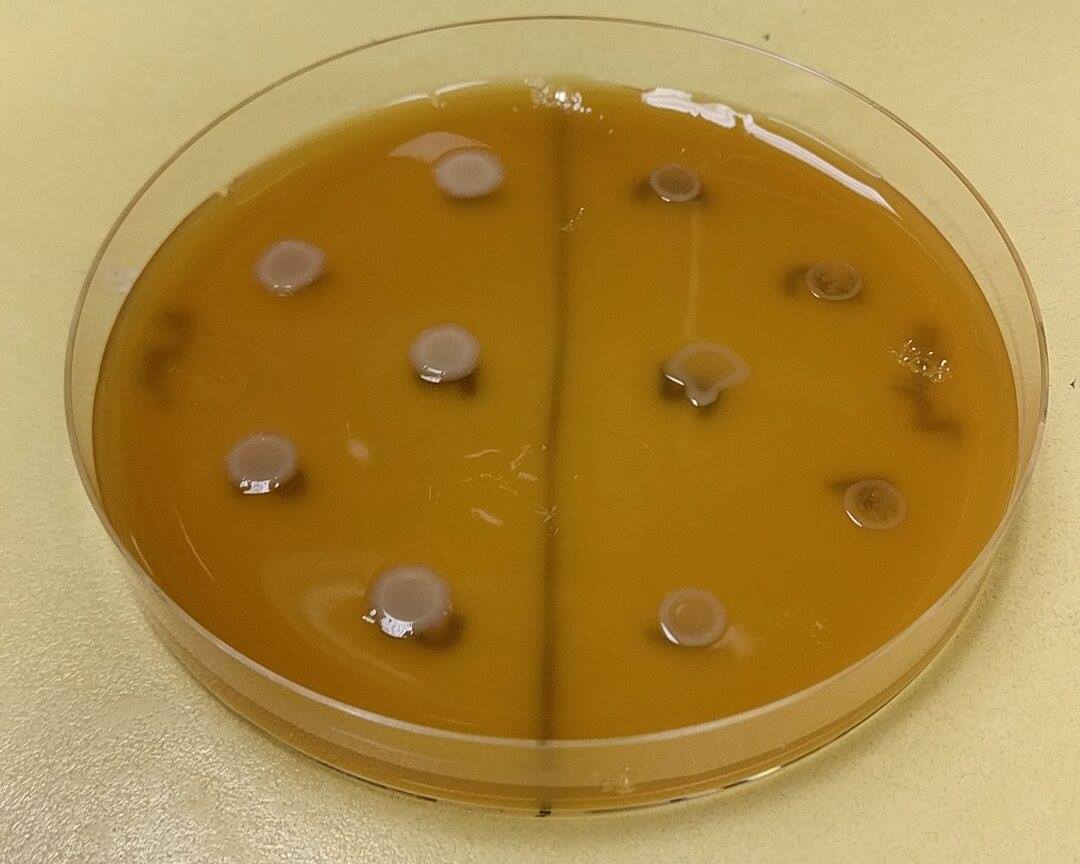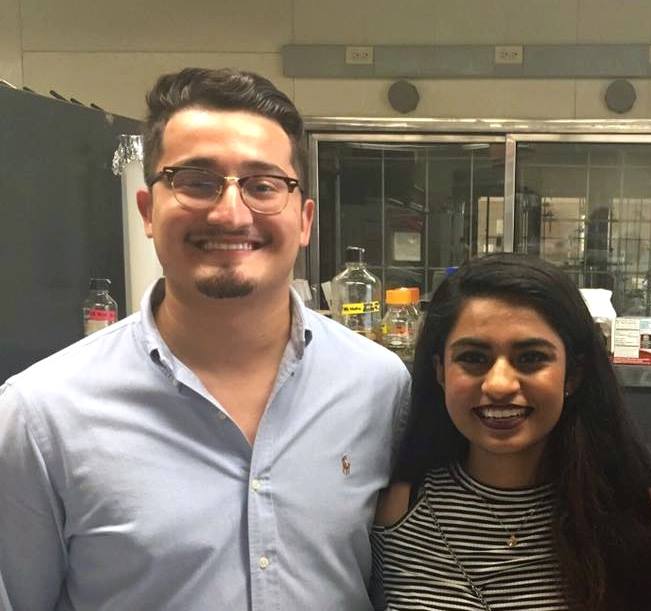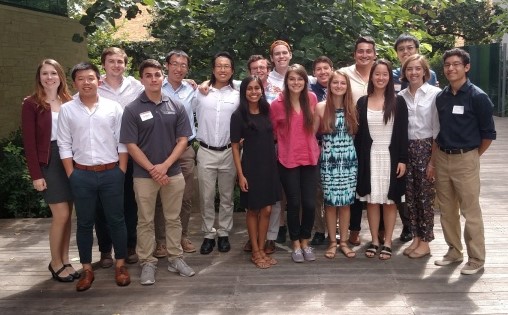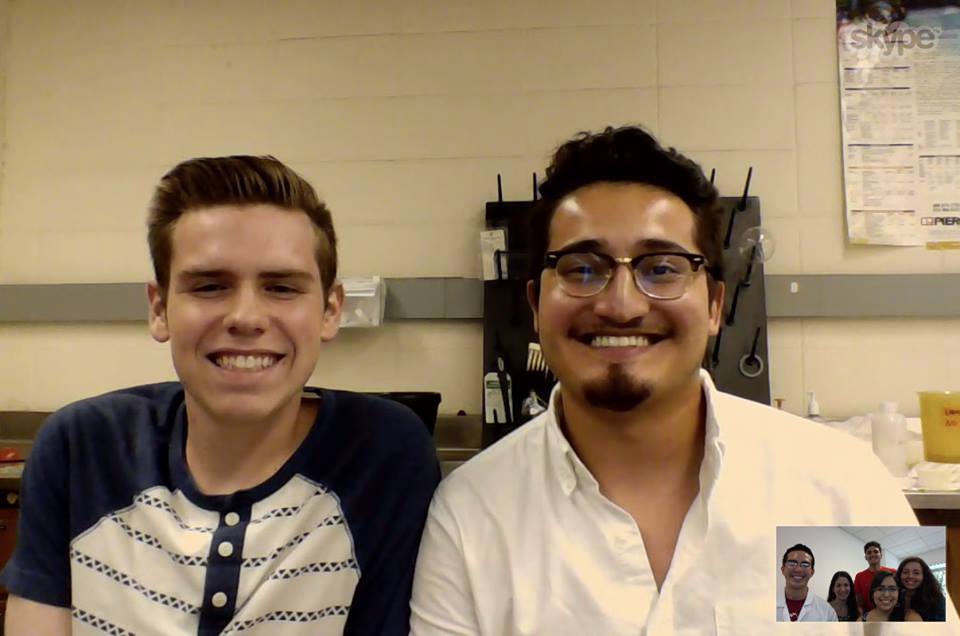Gracetexana (Talk | contribs) |
Stratton g (Talk | contribs) |
||
| Line 11: | Line 11: | ||
<h3>Texas Tech Collaboration</h3> | <h3>Texas Tech Collaboration</h3> | ||
<p><b> To fulfill the gold medal requirement, the UT Austin team mentored the first year Texas Tech team.</b> The Texas Tech Collaboration page can be found <a href="https://2016.igem.org/Team:Lubbock_TTU/Collaborations">here.</a> | <p><b> To fulfill the gold medal requirement, the UT Austin team mentored the first year Texas Tech team.</b> The Texas Tech Collaboration page can be found <a href="https://2016.igem.org/Team:Lubbock_TTU/Collaborations">here.</a> | ||
| − | <p>In the spirit of the | + | <p>In the collaborative spirit of the scientific method, the UT Austin iGEM team reached out to several other teams. Through this outreach to the iGEM teams of Texas, we began working with the Texas Tech team. As a new iGEM team participating in the competition for the first time, Texas Tech had several questions about the competition that we attempted to answer. <p> |
</html> | </html> | ||
[[File:T--Austin_UTexas--Tech.jpg|thumb|left|20%|Team member Zach Martinez of UT and Marilyn of Tech taking a photo after UT Austin gave Tech fluorescent bacteria.]] | [[File:T--Austin_UTexas--Tech.jpg|thumb|left|20%|Team member Zach Martinez of UT and Marilyn of Tech taking a photo after UT Austin gave Tech fluorescent bacteria.]] | ||
<html> | <html> | ||
| − | <p>Over the course of three months, the Tech team has visited Austin three times. | + | <p> Over the course of three months, the Tech team has visited Austin three times. After the decision to collaborate, an initial meeting took place between two leader representatives to discuss the teams’ projects. Brandon Palomo of Texas Tech agreed to attempt to replicate Jenna McGuffey’s results with gellan gum plates, and Katelyn Corley of UT agreed to reproduce the results of an assay made by Tech. Corley answered many of Tech’s questions regarding language in the iGEM rules and classification for iGEM medals. Corley and Palomo exchanged contact information so the teams could continue to collaborate electronically. In the second meeting, Marilyn Mathew of Texas Tech visited Austin to pick up fluorescent bacteria Tech wished to use for a public workshop for community awareness of synthetic biology. The teams met for a third time at the Texas iGEM meetup at the University of Texas Undergraduate Research Symposium. During the third meetup, we provided Texas Tech with the <i>Sphingomonas paucimobilis</i> bacteria required to make gellan gum plates and answered additional questions about the competition, deadlins, trip details, and medal and wiki requirements. While our team has not yet received the assay Texas Tech initially asked us to test, we provided the team with mentorship that should help them be competitive in their first iGEM jamboree. Texas Tech in turn helped our team by testing McGuffey’s protocol for creating gellan gum plates with <i>S. paucimobilis.</i> |
| − | + | </p> | |
| − | + | ||
| − | <p> | + | |
<br> | <br> | ||
</div> | </div> | ||
| Line 32: | Line 30: | ||
<html> | <html> | ||
| − | <p> | + | <p> On Saturday, September 24th, 2016, at the University of Texas Fall Undergraduate Research Symposium, iGEM teams from Rice University, Texas Tech University, and the University of Texas met to discuss their projects and exchange feedback and advice for the competition. During this collaborative discussion, the teams critiqued each other’s projects. Multiple members of each team organized the meetup via email, phone, and Facebook. Teams enjoyed an early opportunity to discuss their projects with other students enthusiastic about synthetic biology. </p><br><br><br><br><br><br> |
</div> | </div> | ||
| Line 41: | Line 39: | ||
[[File:T--Austin_UTexas--Monterrey.jpg|thumb|400px|left|A skype phone-call between UT Austin and Monterrey where UT helped the Monterrey team with their conjugation protocol.]] | [[File:T--Austin_UTexas--Monterrey.jpg|thumb|400px|left|A skype phone-call between UT Austin and Monterrey where UT helped the Monterrey team with their conjugation protocol.]] | ||
<html> | <html> | ||
| − | <p>The team | + | <p>The iGEM team from Monterrey, Mexico also reached out to our team as their closest iGEM neighbor. UT Austin helped the Monterrey team troubleshoot their conjugation procedure.</p> |
<br> | <br> | ||
Revision as of 23:57, 17 October 2016
Austin_UTexas
Collaborations
Texas Tech Collaboration
To fulfill the gold medal requirement, the UT Austin team mentored the first year Texas Tech team. The Texas Tech Collaboration page can be found here.
In the collaborative spirit of the scientific method, the UT Austin iGEM team reached out to several other teams. Through this outreach to the iGEM teams of Texas, we began working with the Texas Tech team. As a new iGEM team participating in the competition for the first time, Texas Tech had several questions about the competition that we attempted to answer.
Over the course of three months, the Tech team has visited Austin three times. After the decision to collaborate, an initial meeting took place between two leader representatives to discuss the teams’ projects. Brandon Palomo of Texas Tech agreed to attempt to replicate Jenna McGuffey’s results with gellan gum plates, and Katelyn Corley of UT agreed to reproduce the results of an assay made by Tech. Corley answered many of Tech’s questions regarding language in the iGEM rules and classification for iGEM medals. Corley and Palomo exchanged contact information so the teams could continue to collaborate electronically. In the second meeting, Marilyn Mathew of Texas Tech visited Austin to pick up fluorescent bacteria Tech wished to use for a public workshop for community awareness of synthetic biology. The teams met for a third time at the Texas iGEM meetup at the University of Texas Undergraduate Research Symposium. During the third meetup, we provided Texas Tech with the Sphingomonas paucimobilis bacteria required to make gellan gum plates and answered additional questions about the competition, deadlins, trip details, and medal and wiki requirements. While our team has not yet received the assay Texas Tech initially asked us to test, we provided the team with mentorship that should help them be competitive in their first iGEM jamboree. Texas Tech in turn helped our team by testing McGuffey’s protocol for creating gellan gum plates with S. paucimobilis.
Texas iGEM Meet Up
On Saturday, September 24th, 2016, at the University of Texas Fall Undergraduate Research Symposium, iGEM teams from Rice University, Texas Tech University, and the University of Texas met to discuss their projects and exchange feedback and advice for the competition. During this collaborative discussion, the teams critiqued each other’s projects. Multiple members of each team organized the meetup via email, phone, and Facebook. Teams enjoyed an early opportunity to discuss their projects with other students enthusiastic about synthetic biology.
Monterrey Collaboration
The iGEM team from Monterrey, Mexico also reached out to our team as their closest iGEM neighbor. UT Austin helped the Monterrey team troubleshoot their conjugation procedure.





